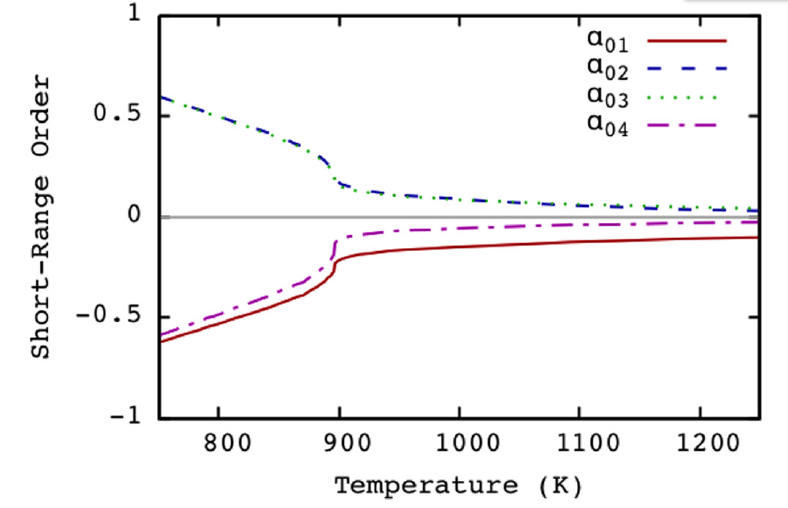Modifying the order-disorder transition in Fe-Si
Modifying the order-disorder transition in Fe-Si
Promotor(en): S. Cottenier, L. Duprez (OCAS NV) /28339 / Solid-state physicsBackground and problem
According to Wikipedia, “Electrical steel is an iron alloy tailored to produce specific magnetic properties: small hysteresis area resulting in low power loss per cycle, low core loss, and high permeability.” It is used in electric motors, generators, and many other electromagnetic devices. Wikipedia points immediately to the main problem related to this material: “Electrical steel is an iron alloy which may have from zero to 6.5% silicon (Si:5Fe). Commercial alloys usually have silicon content up to 3.2% (higher concentrations result in brittleness during cold rolling).” Indeed, whereas it would be beneficial for the magnetic properties to increase the silicon content, this results simultaneously to a high brittleness which limits the machinability of the material. The root cause is that Fe-Si tends to form ordered alloys, and the higher the silicon content, the higher the temperature at which this order persists. Could we add additional alloying elements that push the order-disorder transition temperature to lower values? If that could be realized, we will have an electrical steel with more silicon (i.e. a better electrical steel) that is still disordered and therefore machinable at room temperature.

Figure 1: A predicted order-disorder temperature of 900 K in a Cu-Zn alloy, using a method similar to the one that will be used in this thesis, without machine learning potentials yet (from ref. [3])
Goal
Testing many (combinations of) alloying elements in the lab is time-consuming and expensive. It would be more efficient if we could compute the order-disorder transition temperature from first principles. Methods for doing so, have been recently reviewed [1]. The most accurate method is simultaneously the most intuitive one: calculating from first principles (DFT) total energies for large alloy supercells, and using these as input for Monte-Carlo simulations. The bottleneck is that performing enough of these supercell calculations for sufficiently large supercells is computationally very demanding. You will therefore try a short-cut: training a so-called machine learning potential for a chosen alloy. This itself is a task that takes some effort, but once done, you will be able to perform supercell calculations at a fraction of the cost of a regular DFT calculation. This will lead to high-quality predictions of the order-disorder transition temperature. You will test in the first place whether this approach works for Fe-Si itself, and if successful, for at least one extra alloying element.
Collaboration with company
OCAS NV
- Study programmeMaster of Science in Engineering Physics [EMPHYS], Master of Science in Sustainable Materials Engineering [EMMAEN], Master of Science in Physics and Astronomy [CMFYST]Keywordselectrical steel, Fe-Si, order-disorder transitionsReferences
[1] https://en.wikipedia.org/wiki/Electrical_steel
[2] Markus Eisenbach et al 2019 J. Phys.: Condens. Matter 31 273002, http://dx.doi.org/10.1088/1361-648X/ab13d8
[3] Khan S N and Eisenbach M 2016 Phys. Rev. B 93(2) 024203, https://link.aps.org/doi/10.1103/PhysRevB.93.024203
